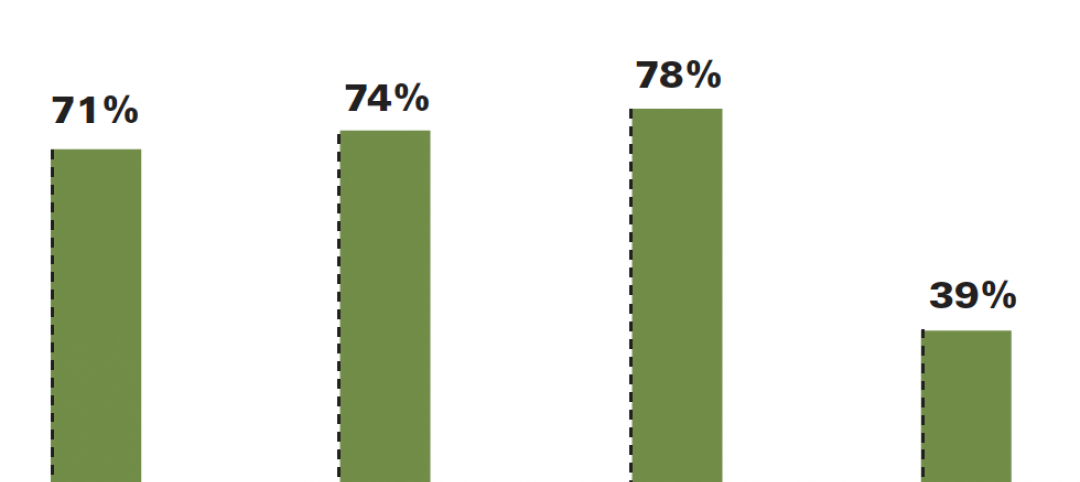This is the last article in a three-part series on digital transformation. Click here to read part one: What's driving the surge of digital transformation in AEC today? and part two: 4 ways AEC firms can benefit from digital transformation
In an era where digital transformation is no longer an option but a necessity for businesses, the Architecture, Engineering, and Construction (AEC) industry is no exception.
Regardless of your business size and type, digital solutions like document digitization, workflow automation software, AI-based analytics and integrations can significantly enhance efficiency, productivity, and competitiveness. They do this provided the journey is well-structured.
Successful implementation of a new strategy demands careful planning, thorough research, and a touch of common sense. Below, we’ll take a look at the steps that can provide a more comprehensive roadmap to guide you through the initial stages of digitalization.
9 Steps for Digital Transformation in Your Business
This list isn't set in stone and can differ depending on your company's goals and processes, but it's a framework you can at least start with.
1. Start with a Clear Strategy
Clarifying your business goals is a good first step. Identify the specific use cases which digitalization will deliver the most value to your organization. Consider not only broad objectives but also specific, measurable targets. For instance, instead of aiming for “business improvement,” a value hard to put in numbers, you may want to go for “cost reduction,” or “improvement of client communication.”
Defining these goals with precision will serve as a compass throughout your transformation process, ensuring that every action aligns with your core objectives.
2. Seek Expert Opinion at the Beginning
Look for guidance from experts or consultants with experience in digital transformation within the AEC sector. They can provide valuable recommendations to consider while building your strategy. Their insights will help you identify potential roadblocks, suggest innovative solutions, and provide you with a clearer path forward.
Don’t wait for issues to happen to start looking for insights. Early consultation can preempt challenges and help you develop a more effective strategy from the outset. It’s always better (and cheaper) to prevent than to fix.
3. Choose the Right Tool
The market today offers solutions for any business size, budget, and need. Tools like Fluix, Procore, Raken, and Autodesk are specifically designed to fit construction business needs and requirements. To see which one suits you most, do online research and check reviews on platforms like Capterra and G2. If your partners or clients already use similar software, ask for their feedback and reference.
Don’t be afraid of testing products and booking demos. A 15-minute call with a product representative will save you hours on setting the account on your own, and figuring out what feature solves your problems best.

4. Start with a Pilot Project
Start with smaller pilot projects to test your digital transformation initiatives. Pilot projects serve as the testing ground for your digital transformation initiatives. Initiate them with a focus on specific areas of your operations.
This phased introduction minimizes disruption to your overall workflow while offering a controlled environment to fine-tune the digital solutions. Once you’ve implemented several of them, gather feedback and adjust your approach accordingly.
5. Establish Baseline Measurement
Before implementing digital changes, establish a set measurement of your existing performance. This assessment should encompass not only quantitative metrics but also qualitative aspects, providing a holistic view of your business operations before the implementation of digital changes.
This will serve as a reference point for assessing the impact of the transformation. Understanding this baseline enables a comparative analysis, facilitating a clearer evaluation of the impact of your digital transformation.
6. Consider Legal Moments and Compliance
Evaluate the digital transformation in light of legal and ethical considerations. Ensure that the integration of digital solutions adheres to privacy regulations and industry-specific laws.
This evaluation should encompass not just data privacy but also ethical considerations, safeguarding your organization from potential risks associated with digital adoption. A compliance framework shields your business from potential legal implications, providing a secure foundation for your digital journey.
7. Take Care of Training
Ensure that your team has the necessary skills to implement and utilize the tool(s) you’ve chosen. Provide training and make sure everyone has the proper equipment (tablets, smartphones) to use it in the field.
Comprehensive training programs should equip your employees not only with technical skills but also with the adaptability needed for a smooth transition. This training should go beyond the desk, ensuring that your field teams are proficient in using the tools ondevices, empowering them for efficient on-site utilization.
The effectiveness of these tools is directly tied to your team's proficiency, making training an integral part of your digital transformation strategy.

8. Assign Responsibilities
If the structure of your company permits, assemble a cross-functional team with representatives from various departments to lead the effort. This team should include IT experts, project managers, and field team representatives.
Clearly defined roles and responsibilities streamline communication, ensuring that the implementation is cohesive and well-coordinated across different operational facets.
9. Set Measurable KPIs
Identify specific key performance indicators that will reflect the changes you intended to achieve. Choose indicators that are well measured in numbers.
While efficiency improvement is a goal, focus on measurable metrics like reduced project timelines, reporting time, downtimes, and agreement signing time. These numerical benchmarks provide a clearer understanding of the transformation's impact, facilitating precise analysis and informed decision-making throughout the process
Last Word
Get down to work: Start implementing things and stay consistent. Compare your performance with both your baseline and industry benchmarks to evaluate how you fare in relation to competitors and best practices. Calculate the return on investment (ROI) for your digital transformation by comparing the benefits gained against the costs incurred.
This ongoing assessment ensures that your digital transformation remains aligned with the evolving industry standards and best practices, continuously enhancing your business operations.
Starting transformation isn’t easy. But with a clear strategy and a plan of action, you can select the most suitable digital tools, test them with pilot projects, and establish a strong foundation with baseline measurements and legal compliance.
Furthermore, comprehensive training, a well-defined team, measurable KPIs, and continuous diligence in the implementation process ensure that you are on a path toward success.
By staying consistent and calculating the return on investment, your AEC business can not only thrive in the digital age but also set new standards of efficiency, productivity, and innovation.
RELATED:
Related Stories
AEC Tech | Mar 4, 2021
The Weekly show, March 4, 2021: Bringing AI to the masses, and Central Station Memphis hotel
This week on The Weekly show, BD+C editors speak with AEC industry leaders about the award-winning Central Station Memphis hotel reconstruction project, and how Autodesk aims to bring generative design and AI tools to the AEC masses.
AEC Tech | Jan 28, 2021
The Weekly show, Jan 28, 2021: Generative design tools for feasibility studies, and landscape design trends in the built environment
This week on The Weekly show, BD+C editors speak with AEC industry leaders from Studio-MLA and TestFit about landscape design trends in the built environment, and how AEC teams and real estate developers can improve real estate feasibility studies with real-time generative design.
AEC Tech | Dec 21, 2020
GIS benefits are widely accepted, but measurements of importance vary among AEC firms
Future usage might boil down to competitive pressure, according to a Dodge Data & Analytics survey.
AEC Tech | Dec 17, 2020
The Weekly show: The future of eSports facilities, meet the National Institute for AI in Construction
The December 17 episode of BD+C's The Weekly is available for viewing on demand.
AEC Tech | Dec 15, 2020
DLR Group launches intelligent air quality analytics platform
sonrai IAQ™ by DLR Group delivers actionable intelligence to optimize facility operations and enhance occupant comfort.
AEC Tech | Dec 8, 2020
COVID-19 affects the industry’s adoption of ConTech in different ways
A new JLL report assesses which tech options got a pandemic “boost.”
Contractors | Dec 4, 2020
‘Speed to market’ defines general contractor activities in 2020
Contractors are more receptive than ever to ways that help get projects done faster.
Smart Buildings | Nov 20, 2020
The Weekly show: SPIRE smart building rating system, and pickleball court design tips
The November 19 episode of BD+C's The Weekly is available for viewing on demand.
AEC Tech | Nov 12, 2020
The Weekly show: Nvidia's Omniverse, AI for construction scheduling, COVID-19 signage
BD+C editors speak with experts from ALICE Technologies, Build Group, Hastings Architecture, Nvidia, and Woods Bagot on the November 12 episode of "The Weekly." The episode is available for viewing on demand.
AEC Tech | Oct 28, 2020
Meet Jaibot, Hilti's new construction robot
The semi-autonomous robot is designed to assist MEP contractors with ceiling-drilling applications.

















